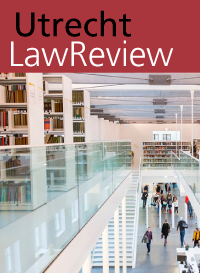Networks, Dialogue or One-Way Traffic? An Empirical Analysis of Cross-Citations Between Ten of Europe’s Highest Courts
DOI:
https://doi.org/10.18352/ulr.196Keywords:
cross-citations, highest courts, citation networks, judicial dialogue, network analysis, comparative lawAbstract
Today judges are said to 'see each other not only as servants and representatives of a particular polity, but also as fellow professionals in an endeavour that transcends national borders' (A.M. Slaughter). This statement was made in the context of transnational litigation but it may also reflect a more general trend. Interaction may take place in various forms. There is some direct transnational cooperation between judges, but it can also be seen as a form of influence when a particular court is frequently cited by its foreign counterparts. In this article, which is part of a wider research project, we present our findings on cross-citations between ten of Europe's highest courts. We considered 636,172 decisions and found 1,430 cross-citations between 2000 and 2007. The first section of the article summarises the data considered and the search methodology used. The next two sections present different ways of visualising these data: on the one hand three types of bar charts, and on the other hand two network presentations of the cross-citations between the ten courts. Subsequently, we examine the relationship between incoming and outgoing citations, in particular whether some of our countries may be regarded as 'the core' and the others as 'the periphery'.Downloads
Published
2012-05-10
Issue
Section
Articles
License
Copyright (c) 2012 The Author(s)

This work is licensed under a Creative Commons Attribution 4.0 International License.
Authors who publish with this journal agree to the following terms:- Authors retain copyright and grant Utrecht Law Review right of first publication with the work simultaneously licensed under a Creative Commons Attribution 4.0 License that allows others to share the work with an acknowledgement of the work's authorship and initial publication in the Utrecht Law Review.
- Authors are able to enter into separate, additional contractual arrangements for the non-exclusive distribution of the journal's published version of the work (e.g., post it to an institutional repository or publish it in a book), with an acknowledgement of its initial publication in Utrecht Law Review.
- Authors are permitted and encouraged to post their work online (e.g., in institutional repositories or on their website) prior to and during the submission process, as it can lead to productive exchanges, as well as earlier and greater citation of published work (See The Effect of Open Access).
Once accepted for publication, the final version of the paper must be provided. A completed and signed copyright form, which will be sent by the Managing Editor, must accompany each paper. By signing the form the author states to accept the copyright notice of Utrecht Law Review. The copyright notice for authors is also included in the copyright acceptance form.
